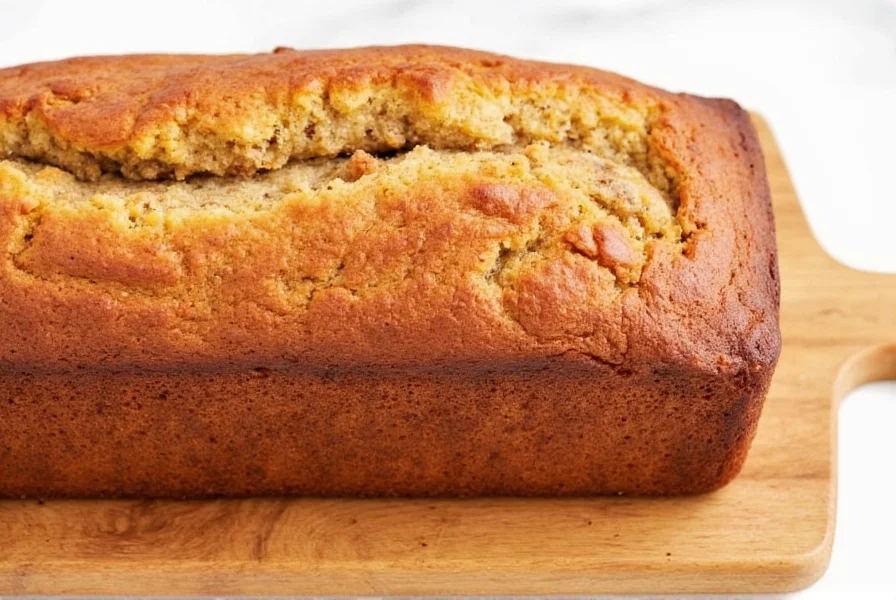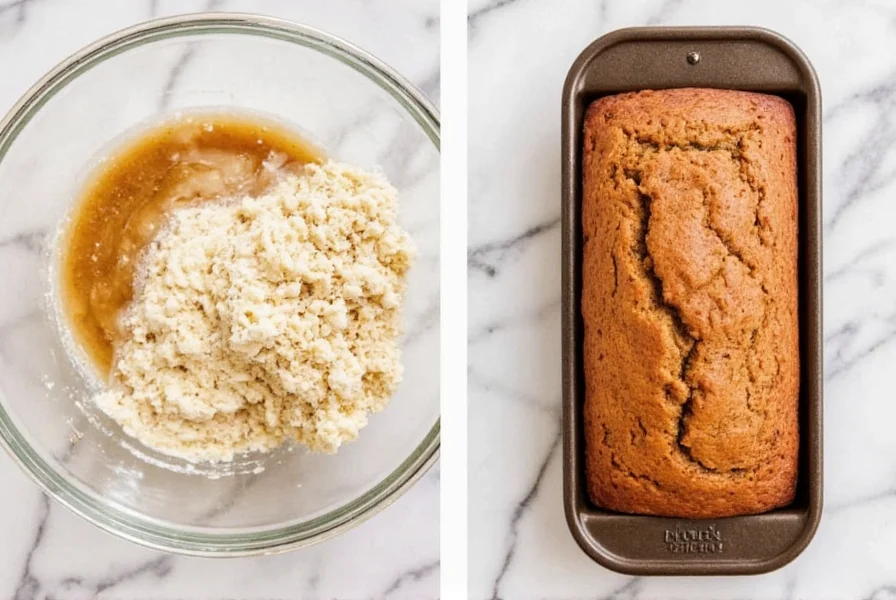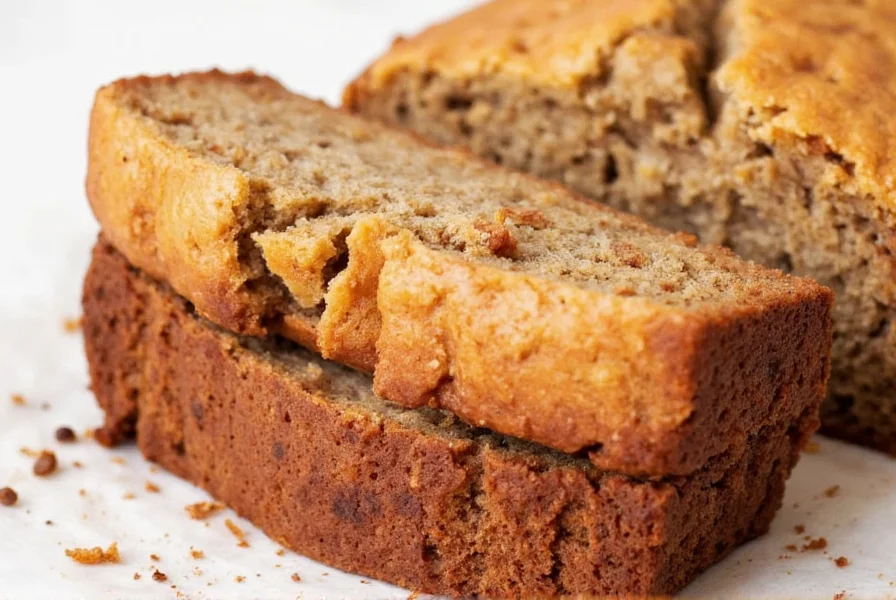Banana cinnamon bread elevates the classic quick bread with warm spice notes that complement the natural sweetness of ripe bananas. Unlike standard banana bread recipes, this variation incorporates cinnamon as a primary flavor component, creating a more complex taste experience that's perfect for breakfast, snacks, or dessert. The magic happens when the natural sugars in overripe bananas caramelize during baking, melding with cinnamon to create a flavor profile reminiscent of banana bread meets cinnamon roll.
The Science Behind Perfect Banana Cinnamon Bread
Understanding the chemistry behind banana cinnamon bread helps ensure consistent results. As bananas ripen, their starch converts to sugar, providing both sweetness and moisture. The ideal ripeness level delivers maximum flavor without making the bread too wet. Cinnamon contains cinnamaldehyde, the compound responsible for its distinctive flavor and aroma, which intensifies when baked.
| Banana Ripeness Level | Visual Characteristics | Best For Cinnamon Bread |
|---|---|---|
| Just Yellow | Firm, no brown spots | Not recommended - lacks sweetness |
| Yellow with Brown Speckles | Some soft spots, still mostly yellow | Good - balanced moisture and structure |
| Mostly Brown | Soft, heavily spotted, some black areas | Best - maximum sweetness and moisture |
| Blackened | Mushy, completely brown/black | Use with caution - may be too wet |
Essential Ingredients and Their Roles
The foundation of exceptional banana cinnamon bread lies in understanding each ingredient's purpose. Overripe bananas (about 3 medium) provide natural sweetness and moisture. All-purpose flour creates structure, while melted butter contributes richness. Eggs bind ingredients and add structure, and buttermilk enhances tenderness. The cinnamon-to-banana ratio is critical—typically 1½ to 2 teaspoons per 3 bananas creates the perfect balance without overwhelming the banana flavor.
Many home bakers wonder how to make moist banana cinnamon bread that doesn't dry out. The secret lies in not overmixing the batter once flour is added, which develops gluten and creates toughness. Gently folding ingredients until just combined preserves the tender crumb that defines excellent banana bread.
Step-by-Step Preparation Guide
Follow these professional baking techniques for flawless banana cinnamon bread every time:
- Prepare ingredients: Measure all ingredients before starting. Use room temperature eggs and buttermilk for even mixing.
- Mash bananas: Use a fork to mash ripe bananas—leaving some small chunks creates texture variation.
- Cream butter and sugar: Beat softened butter with sugar until light and fluffy (about 3 minutes).
- Add wet ingredients: Incorporate eggs one at a time, then mix in mashed bananas, buttermilk, and vanilla.
- Combine dry ingredients: Whisk flour, baking soda, salt, and cinnamon in separate bowl.
- Fold together: Gently fold dry ingredients into wet mixture until just combined—do not overmix.
- Prepare pan: Grease and flour a 9x5 inch loaf pan or line with parchment paper.
- Bake: Pour batter into pan and bake at 350°F (175°C) for 60-75 minutes until toothpick inserted comes out clean.
Avoiding Common Banana Cinnamon Bread Mistakes
Even experienced bakers encounter issues with banana cinnamon bread. Understanding these common problems prevents disappointment:
- Sunken center: Usually caused by too much leavening or underbaking. Measure baking soda precisely and test for doneness with a toothpick.
- Dry texture: Results from overbaking or insufficient banana moisture. Check bread 5 minutes before minimum baking time.
- Bitter taste: Occurs when cinnamon is burned. Never exceed 2 teaspoons per 3 bananas in standard recipes.
- Dense crumb: Caused by overmixing or old baking soda. Mix until just combined and test baking soda freshness monthly.
For those seeking healthy banana cinnamon bread options, consider substituting half the all-purpose flour with whole wheat flour, replacing some sugar with maple syrup, and using Greek yogurt instead of buttermilk. These modifications maintain moisture while adding nutritional benefits without sacrificing flavor.
Storage and Serving Recommendations
Proper storage preserves banana cinnamon bread's quality. Cool completely before wrapping in plastic wrap or storing in an airtight container at room temperature for up to 4 days. For longer storage, wrap tightly in plastic and aluminum foil, then freeze for up to 3 months. Thaw at room temperature before serving.
The ideal way to serve banana cinnamon bread is slightly warmed with a pat of butter or cream cheese spread. It pairs beautifully with coffee or tea, making it perfect for breakfast or afternoon snacks. For special occasions, top with a simple cinnamon glaze (powdered sugar, milk, and extra cinnamon) for an elegant presentation.

Popular Variations for Dietary Needs
Adapting banana cinnamon bread for different dietary requirements is straightforward with these tested modifications:
- Gluten-free version: Substitute all-purpose flour with a quality gluten-free flour blend and add ½ teaspoon xanthan gum.
- Vegan adaptation: Replace eggs with flax eggs (1 tablespoon ground flaxseed + 3 tablespoons water per egg) and use plant-based butter.
- Reduced sugar option: Decrease sugar by 25% and add 1-2 tablespoons of pureed dates for natural sweetness.
- Nutty variation: Fold in ½ cup chopped walnuts or pecans for added texture and flavor complexity.
When exploring banana cinnamon bread variations, consider adding complementary spices like nutmeg or cardamom in small quantities (⅛ teaspoon) to enhance the cinnamon without overwhelming the banana flavor. These subtle additions create a more sophisticated flavor profile that elevates your best banana cinnamon bread recipe from ordinary to extraordinary.

Troubleshooting Your Banana Cinnamon Bread
Even with careful preparation, issues can arise. Here's how to address common problems:
- Bread is too dense: Likely caused by overmixing or insufficient leavening. Mix batter just until combined and verify baking soda is fresh.
- Uneven baking: Rotate pan halfway through baking time for even heat distribution in your oven.
- Sticking to pan: Ensure thorough greasing and flouring of pan, or use parchment paper liner.
- Spice flavor too strong: Reduce cinnamon to 1 teaspoon and consider adding a pinch of salt to balance flavors.
Mastering the art of banana cinnamon bread requires attention to detail but delivers impressive results. By following these banana cinnamon bread baking tips, you'll consistently produce loaves with perfect texture, balanced flavor, and that irresistible aroma that fills your kitchen. The key to perfect banana cinnamon bread texture lies in respecting the science of baking while honoring the natural qualities of your ingredients.
How much cinnamon should I add to banana bread?
For standard banana cinnamon bread using 3 medium bananas, 1½ to 2 teaspoons of ground cinnamon provides the ideal balance. Start with 1½ teaspoons if you prefer subtle spice notes, or use 2 teaspoons for more pronounced cinnamon flavor. Never exceed 2½ teaspoons as this can overwhelm the banana flavor and create bitterness when baked.
Why is my banana cinnamon bread dry?
Dry banana cinnamon bread typically results from overbaking, insufficient banana moisture, or too much flour. Use properly ripe bananas (heavily speckled), measure flour correctly by spooning into measuring cups (don't scoop), and check for doneness 5 minutes before the minimum baking time. The toothpick test should show moist crumbs, not completely clean.
Can I make banana cinnamon bread without eggs?
Yes, you can successfully make egg-free banana cinnamon bread. Substitute each egg with one of these options: ¼ cup unsweetened applesauce, 1 tablespoon ground flaxseed mixed with 3 tablespoons water, or ¼ cup plain yogurt. These alternatives provide binding properties while maintaining moisture. The texture may be slightly denser but still delicious.
How do I prevent banana cinnamon bread from sinking in the middle?
To prevent sinking, ensure your baking soda is fresh (test by adding to vinegar—if it doesn't bubble vigorously, replace it), don't overfill the pan (fill only ⅔ full), avoid opening the oven during the first 45 minutes of baking, and verify complete baking by inserting a toothpick into the center—it should come out with moist crumbs, not wet batter.
What's the best way to store banana cinnamon bread?
Store cooled banana cinnamon bread in an airtight container at room temperature for up to 4 days. For longer storage, wrap tightly in plastic wrap followed by aluminum foil and freeze for up to 3 months. Thaw at room temperature while still wrapped to prevent condensation. Never refrigerate banana bread as this accelerates staling.











 浙公网安备
33010002000092号
浙公网安备
33010002000092号 浙B2-20120091-4
浙B2-20120091-4